Yerba Buena Island will be a residential development like no other in San Francisco! Boutique developer Wilson Meany and real estate investment firm Stockbridge Capital Group recently announced the start of the vertical construction of this two-decade long milestone project.
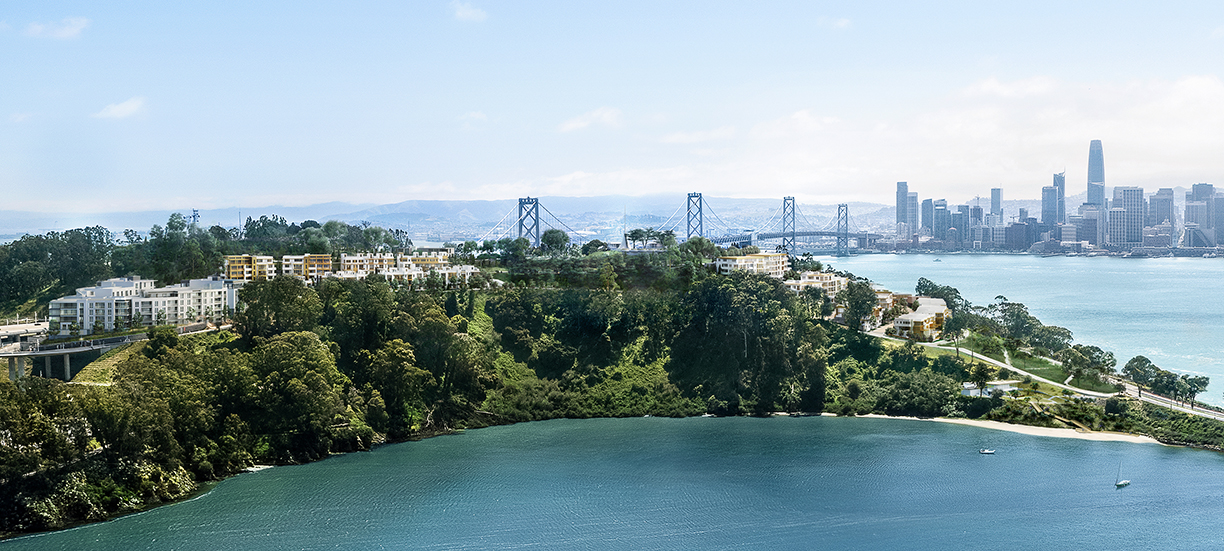
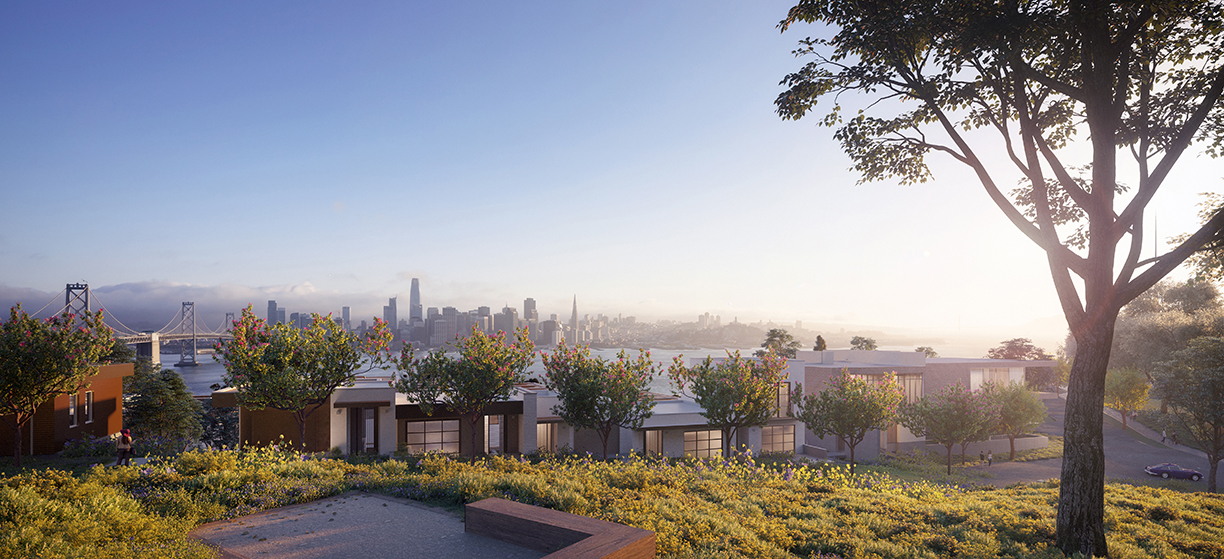
The 266 luxury residences will have sweeping 360 degree views of the city, a first of this area’s kind. A naturally formed island in the heart of San Francisco Bay, the island’s community will feature a number of “wellness-minded amenities” such as hiking trails, access to parks and more. Residents will be able to lounge out on Clipper Cove Beach and travel only 10 minutes to the city’s downtown.
“Sustainable” is a keyword for this new development as the island’s diverse topography was kept in mind when designing each condominium, flat and townhome. Meany’s developments, which include the historic San Francisco Ferry building, typically reflect the importance of holistic living and people’s connections with each other and the nature that surrounds them — Yerba Buena Island will be no exception.
More than half of the island’s environmental space is being reserved for open area parks, sandy beaches, and hiking and biking paths. A team of award- winning architecture firms —Hart Howerton, BDE Architecture, Inc., Cliff Lowe Associates, Inc., Hood Design Studio, Edmonds + Lee Architects, Meyer Davis and Aidlin Darling Design — teamed up to create residences that incorporate and celebrate the island’s unique geography.
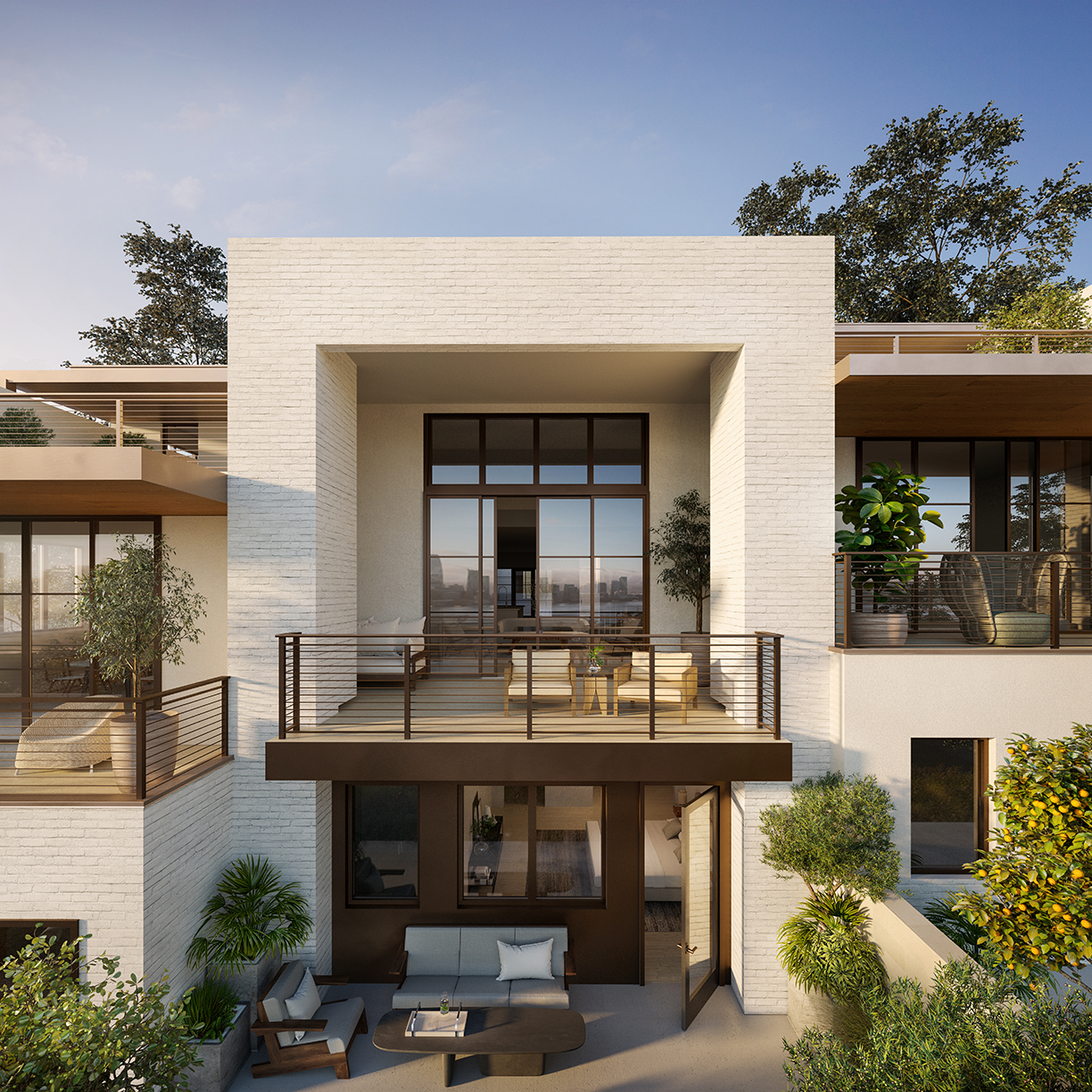
Residential sales will begin in early 2020, with the The Agency Development Group being the exclusive marketing and sales firm for Yerba Buena Island.
Photos courtesy of Hayes Davidson.
Eco-friendly furniture and sustainable decor are more than a cute trend — they are a priority for STEM.
With the increasing amount of plastic in our oceans, shrinking forests, and our overall impact on Mother Earth, sustainable designs are becoming more and more popular. Companies like STEM are realizing the importance of sourcing materials responsibly and spreading the message.
Going beyond the typical one or two eco-friendly pieces that most companies offer, STEM’s collection takes sustainability carefully into consideration. Founded by two brothers, Ryan and Travis, STEM is inspiring buyers and designers alike with its entirely eco-friendly collection. The company prides itself on creating a “Healthy Planet, Healthy Home.”
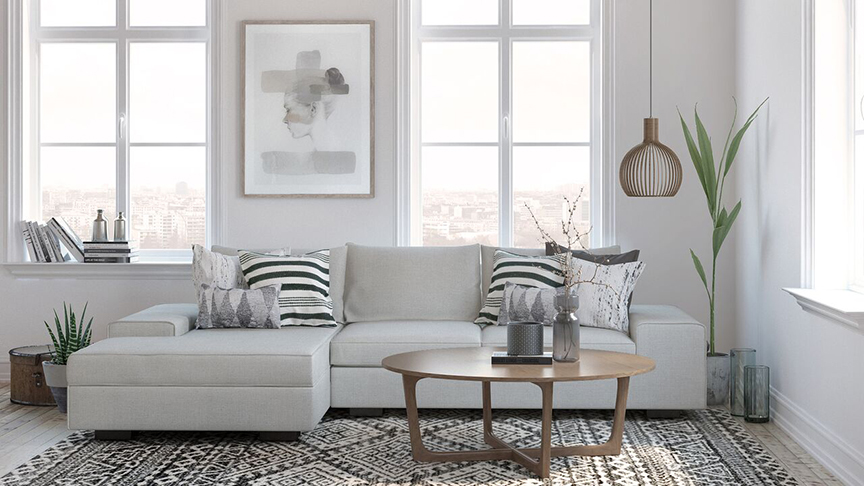
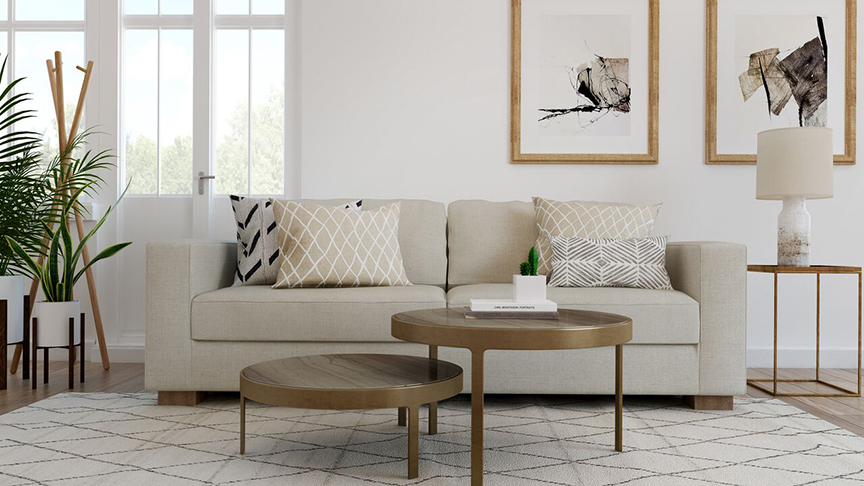
STEM ensures satisfaction by building each piece one at a time in L.A. from eco-materials like natural latex and wool, bamboo, organic cotton, and more. Cutting out harsh chemicals like fire retardants and certain glues are also a part of the process. Sofas and sectionals — being the biggest portion of STEM’s business — are made with FSC certified wood frames, natural jute, and organic cotton. Pieces like the Rio Sofa and Blumen Sectional can be made to the inch to get it just right for each customer and space.
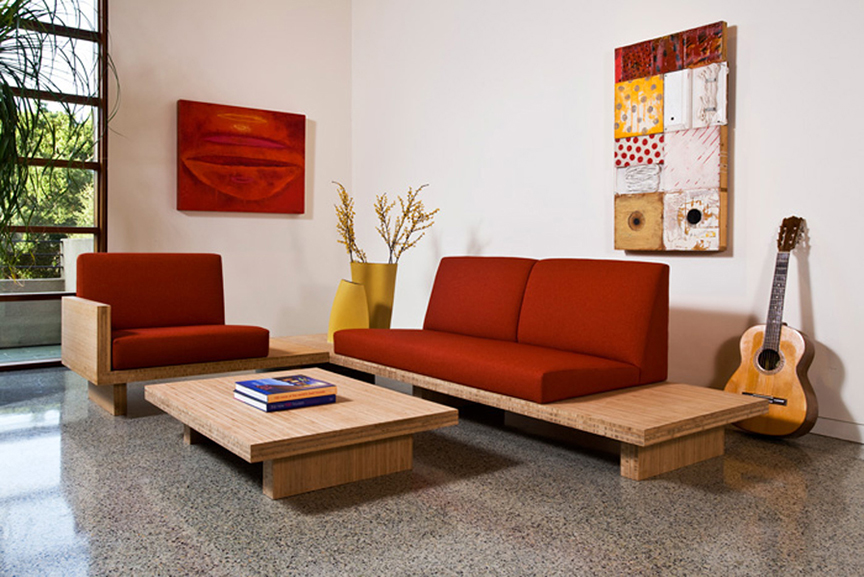
Bamboo Float is a unique style that STEM incorporates into sofas, tables, and more. Bamboo is an ideal material because it grows as quickly as a weed. STEM uses sheets of bamboo for the base and then attaches an upholstered piece for the seating component.
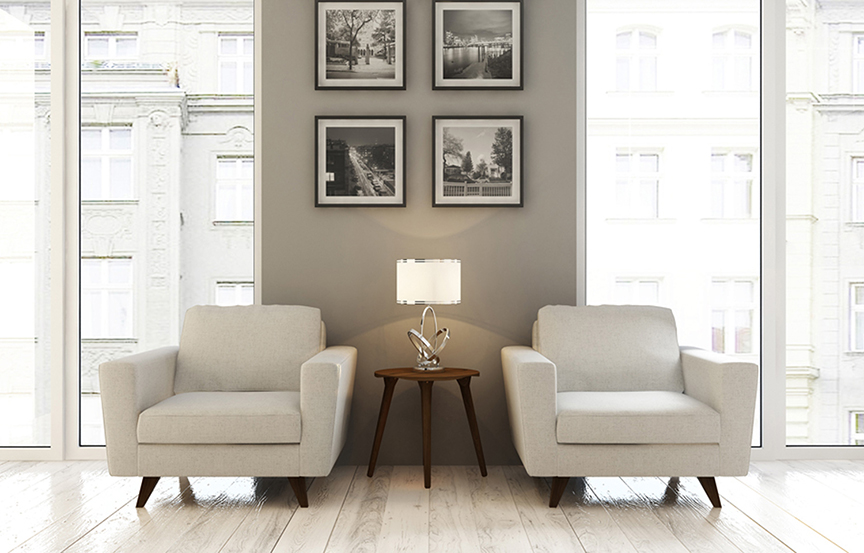
For the Voya Side Table, the piece is handcrafted with FSC certified walnut or hard maple and is covered in zero VOC matte finish. The design can also be made into a coffee table as well.
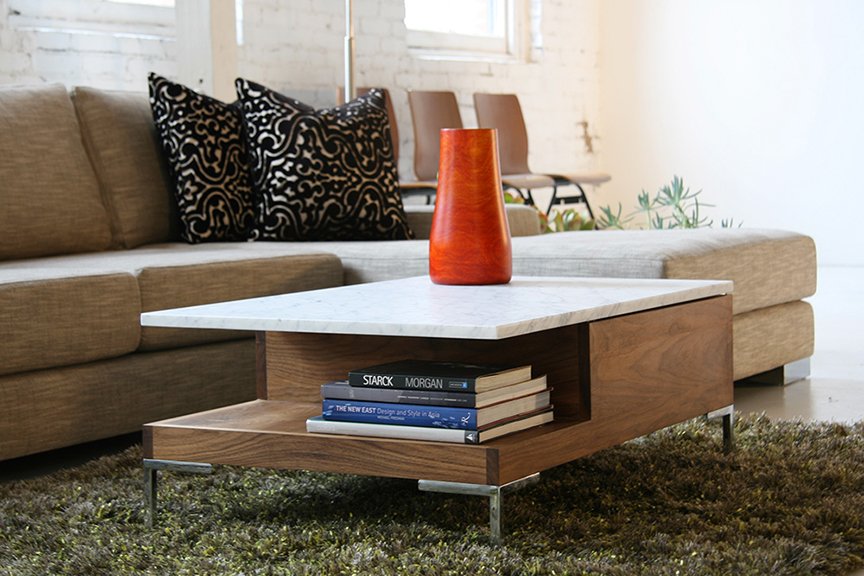
Also using FSC certified walnut or hard maple for the base is the Sino Coffee Table. The top is white carrera marble and has the option for a draw for storage. STEM makes each piece as it’s needed, therefore cutting out the mass production of generic goods.
Creating the greenest of green homes is an art form.
By Sarah Binder
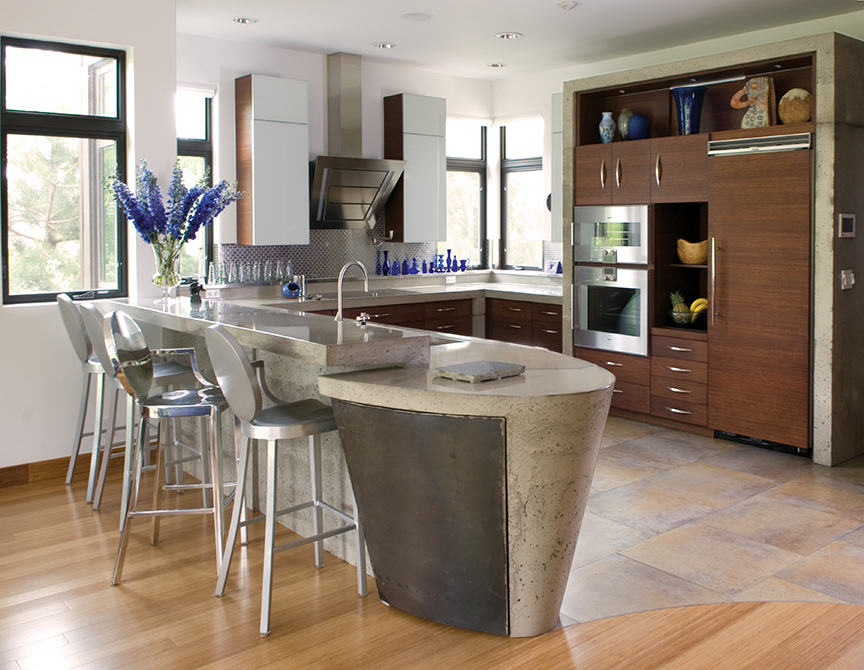
Certified LEED Platinum, the Edge House was awarded “2009 Green Home of the Year” by the Colorado Home Builder’s Association.
Colorado is well-known for being a leader in green residential building in America. In Boulder, the professional building community (engineers, architects, builders, et cetera) passionately adheres to one of the most progressive and strict energy building codes in the country. Here, the bar for sustainability in luxury homes is reached, and raised, regularly — without compromising on beauty and livability.
Architect Scott Rodwin, founding principal of Rodwin Architecture and president of Skycastle Construction, is an ambassador for this art form, educating everyone from his clients seeking the green homes of their dreams, to architects, builders, and Realtors across the country.
While environmental issues such as global climate change can be polarizing, Rodwin has found throughout his 25-plus-year career that nearly all clients care about creating a healthy living environment at home for their families.
“Nobody wants a toxic living environment, and nobody wants to pay more energy bills than they have to,” he says. “We talk to our clients to learn what level of energy performance they desire in their home, and then we thoughtfully and carefully design it.”
Almost any architect or builder can construct a home that uses 50 percent of the allowable amount of energy by code, Rodwin notes. But, creating a luxury home that is highly energy efficient or zero-energy, meaning on an annual basis that it produces as much energy as it consumes, requires a deeply experienced and knowledgeable team. He recommends utilizing a design/build team wherein the project is managed and executed by a single entity.
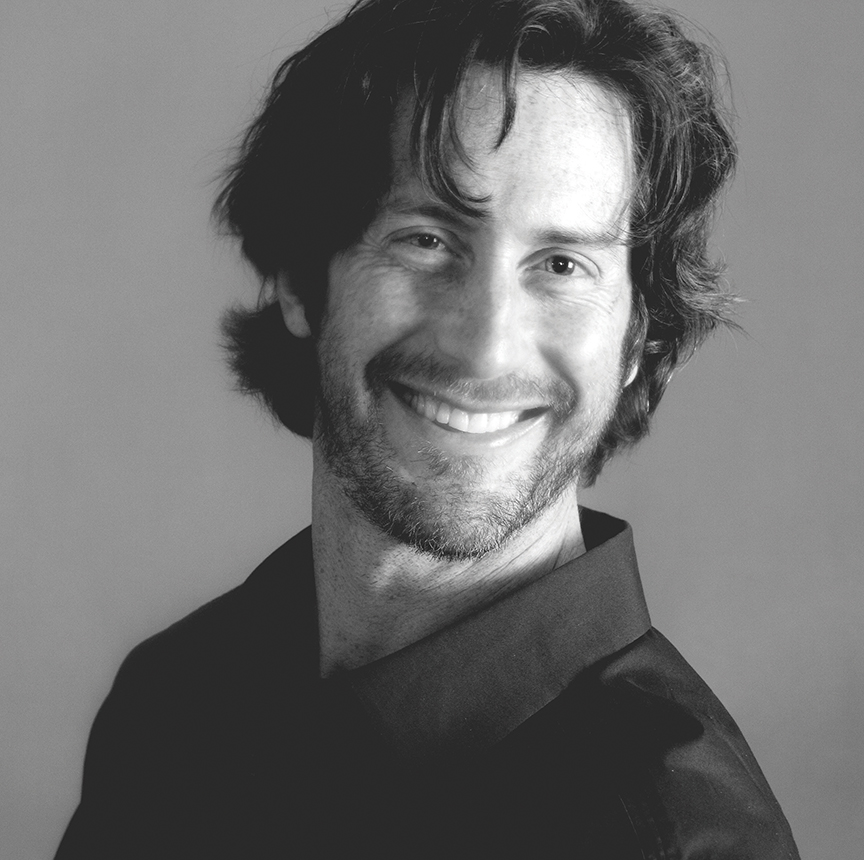
Scott Rodwin, LEED AP, is founding principal of Rodwin Architecture in Boulder, Colorado. In 2006, he was named American Institute of Architects’ “Young Architect of the Year” for the U.S. Western Mountain Region.
The design/build process is fully integrated, has a single point of responsibility for any issues that may arise during a project, and leads to high-quality, detailed work that results in increased client satisfaction. “When you’re looking to create a net-zero building, the performance level that you are aiming for is so high that you have to have complete cohesiveness among everyone involved,” Rodwin says.
His favorite residential design/build project is net-zero energy, and also was his firm’s most challenging undertaking to date, taking four times as many hours of design to complete than an average project. An entrepreneur and CEO moving to Boulder from Germany challenged Rodwin to build the greenest home in America. Built in 2007, the 6,200-square-foot, $3.5 million Edge House is certified LEED Platinum.
“[The client] asked us to pioneer a number of technologies, including the first legally permitted grey water system in Colorado. He designed a brand-new grey water system for this house, which he got patented,” Rodwin explains.
Green building has progressed significantly since 1999, when Rodwin launched his firm. Today, to obtain a building permit in the United States, the plans must be farily energy efficient. The energy section of the International Residential Code has advanced farther and more rapidly than any other section of the code in the past two decades, he notes. Each municipality then adopts and can modify that baseline code.
“In order to get a building permit in Boulder, if you are building a 5,000-square-foot house, the home is required to be net-zero energy,” says Rodwin. “You have to do everything right — renewable energy on the roof, exceptionally high-quality construction, and passive solar.”
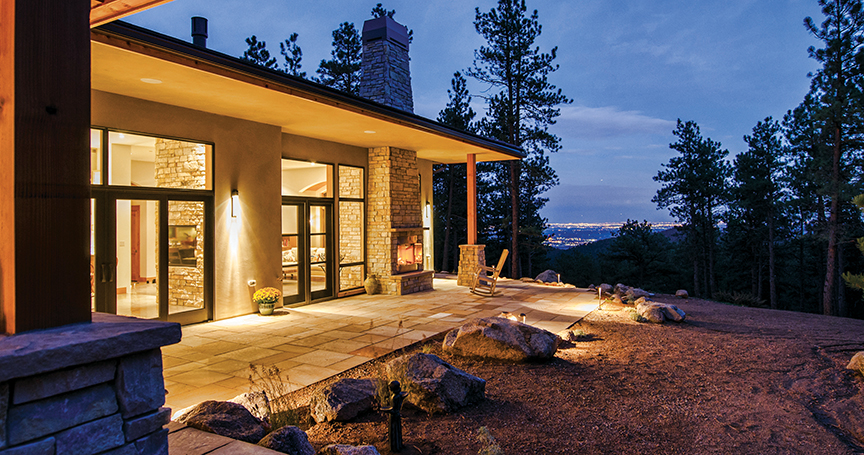
Nestled into a forested hillside glade, the Dineen Residence combines old world materials with clean contemporary lines.
The only sustainable technology that is completely free, passive solar design is the “starting point” to achieving a net-zero house. It involves strategically designing a home’s orientation, windows, walls, and more, so that the home distributes solar energy in the form of heat in the winter and rejects solar heat in the summer.
While his firm’s specialty is creating brand-new, high-end custom homes, Rodwin suggests a few strategies owners of existing homes can implement to improve the thermal comfort and energy efficiency of their properties. Weatherization (caulking and sealing) can cost just a few thousand dollars, yet will pay for itself over a few years. After weatherizing, owners should consider adding new insulation and upgrading their windows, especially single-pane or metal windows, which are significant weak spots.
A number of upgrades, such as adding solar panels, generate value through rebates or the opportunity to sell excess energy back to one’s utility company, in addition to increasing the value of the home.
“Upgrade your mechanical system,” Rodwin recommends. “Old, open combustion mechanical systems are only about 70 percent efficient. They also lead uncombusted gases into the house. Most states and utility companies offer energy-efficiency rebates to their customers, and you can usually get a subsidized system.”
Whether going green from the ground up or through updates, homeowners do not need to compromise on beauty, quality, size, views, or any other aspect in order to achieve a highly sustainable home, Rodwin notes. “Green building pays back over time and creates a more valuable house. You’re getting a better building. You’re getting a Tesla.”
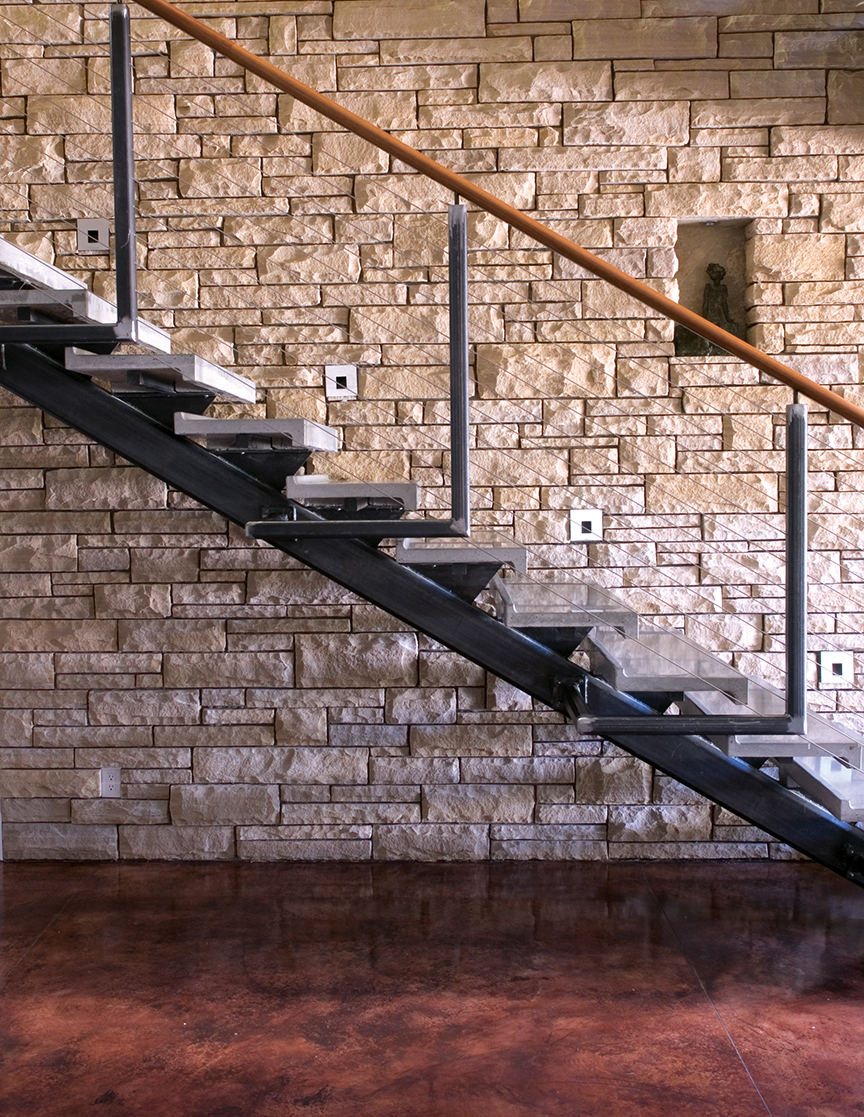
In Boulder, where everyone “speaks fluent green building,” says Rodwin, the mission is to continue pushing the envelope. His team already has a high level of knowledge of what the next level of green building entails, including larger and more solar arrays, triple-paned windows, and full-foam insulation packages.
“Our goal is no longer net-zero energy. Our new goal is regenerative design, wherein you produce more energy over the course of a year than you consume. Regenerative housing is Olympic-level green building — only a handful of these homes exist in the whole country.”
Photos courtesy Rodwin Architecture + Skycastle Construction














